You’ll own nothing, and be happy.
World Economic Forum essay, 2016
Ah, subscription services. We all love them (…right?). We can now access thousands of TV shows from Netflix, Prime, Disney+, Hulu and more. We can also subscribe to receive skincare products, printer ink, regular meals, and even clean underwear!
Okay, so subscriptions have gone a bit crazy. But at least Amazon hasn’t joined in, right? After all, we can buy a $10 Echo device in a sale, and use all its features forever – all without a subscription, right?
Well, that’s true right now – but I personally believe that Amazon will soon make part of their Echo and Alexa service subscription-only. Here’s why I think this.
Reasons Why Amazon Might Start Charging For Echo/Alexa
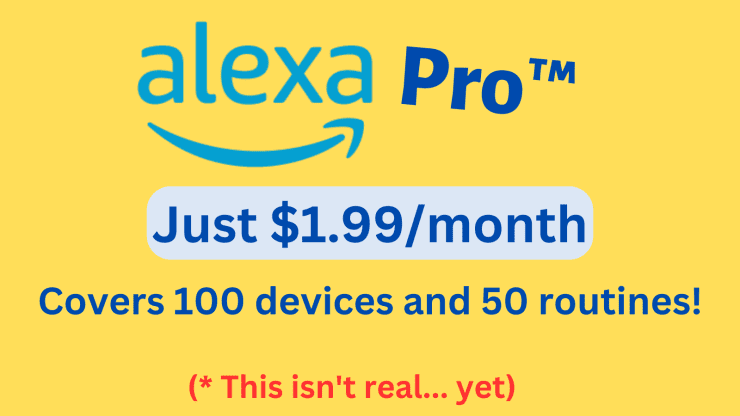
Here’s a bunch of reasons why I think that the made-up advert above could actually come true…
Amazon’s Alexa Division Is Losing Lots Of Money
In November 2022, Business Insider reported that Amazon’s smart home platform – Alexa – was losing loads of money: many billions of dollars each year, in-fact. This is because Amazon have struggled to find a sensible way of monetizing Alexa, which is bad because all the features and third-party integrations cost a lot of money.
After all, with Alexa you can take dozens of different smart devices, connect them via the Alexa app, and then create loads of routines which allows you to automate large parts of your house. The fact that is can all be done for free is impressive, but it leaves me wondering whether Alexa will eventually put a cap on how many devices and routines you can have for free.
This is exactly what the IFTTT smart platform were forced to do back in 2020, limiting free-tier users to only three “applets” (home automations). The IFTTT platform had loads of promise, but all its features came at a big cost – hence why they needed to introduce a subscription plan, and cut back on the free features.
Other Smart Companies Are Changing Their Subscription Plans
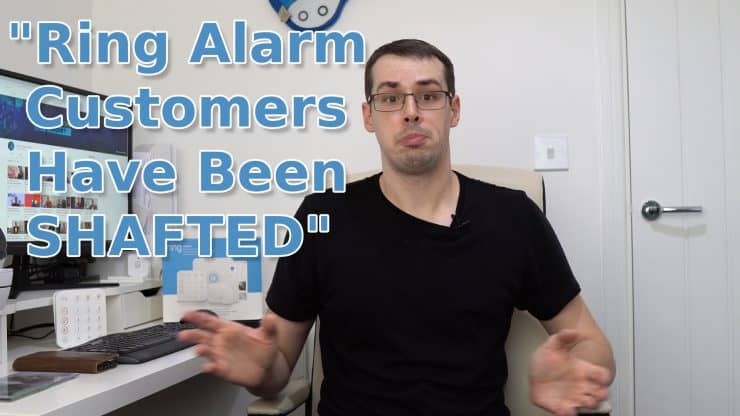
IFTTT aren’t the only smart home company that struggled financially after offering loads of free features, eventually being forced to introduce paid subscriptions:
- Wink – the smart home platform – annoyed… well, every single customer, back in 2020. They randomly announced that all their free features would imminently disappear, and users would instead have to pay $4.95 per month to keep their products working as expect.
This was after Wink started struggling financially, after years of selling their products at competitive prices but providing the majority of features for free. - Wyze Cam used to allow their cameras to record for free, however they overhauled their subscription plans in 2021 – essentially meaning that you had to pay monthly to receive camera recordings. If you didn’t pay, you would only receive still images.
While Wyze did eventually allow you to ‘name your price’ (and allow users to ‘pay’ $0 a month), the overall changes meant that many free-tier Wyze customers were much worse off. - In 2023, Arlo announced that they would stop supporting some of their older products. Arlo also said that their subscription plans would rise in price – and in some cases the price-hike equated to 40%.
- Ring – the popular smart doorbell and camera company – have repeatedly nerfed their subscription plans in recent years. In 2021, they effectively doubled the subscription price for their Ring alarm customers – from $10 per month (for Ring Protect Plus) to $20 per month (for Ring Protect Pro).
In 2022, Ring hiked the price of Ring Protect Basic by 33% – without warning. And in 2023, Ring took away some really crucial features – including modes – from their free-tier customers.
Oh yeah, Ring started making all these annoying subscription changes after Amazon purchased them (in 2018). Funny that!
Prime Music Is A Clear Example Of Amazon’s Internal Plans
One of the Echo’s big selling points is the ability to easily play music on them. Amazon offer a number of music plans for their customers, including Amazon Music Prime which is included in people’s Prime memberships, and Amazon Music Unlimited which costs $8.99/month or $89/year.
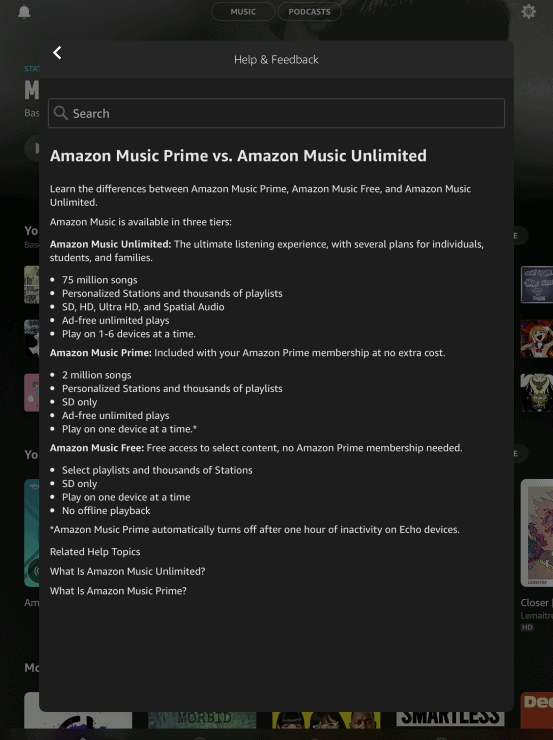
Prime Music used to be great: while it only contained 2 million songs, this often included all the latest songs. Plus if a much-loved song was missing, you could just buy its MP3 and play this via your Echo device, too. This meant that Prime Music was often a low-cost way of listening to loads of different songs through your Echo – without requiring an expensive Spotify Premium subscription. It worked really well.
But in November 2022, Amazon broke all this by announcing that songs within the Amazon Music Prime subscription would only play “in shuffle mode” going forward. In other words, it was like a random radio station.
Around the same time, Amazon started promoting their Music Unlimited subscriptions a lot. Amazon’s corporate message seemed clear to me: simple, choice-based music playing is no longer possible as part of your Prime membership. If you want to choose songs, pay $8.99/month for Amazon Music Unlimited.
Because so many Prime members used their Echo device for playing music, or used the Amazon Music app for simple, choice-based music playing, no-one really thought that Amazon would come along and take this all away overnight. But they did.
I therefore have no doubt that Amazon will happily start taking away features from the Alexa smart home platform, too (hiding them behind a subscription paywall instead).
Echo’s New Disney Features Are Paid-For
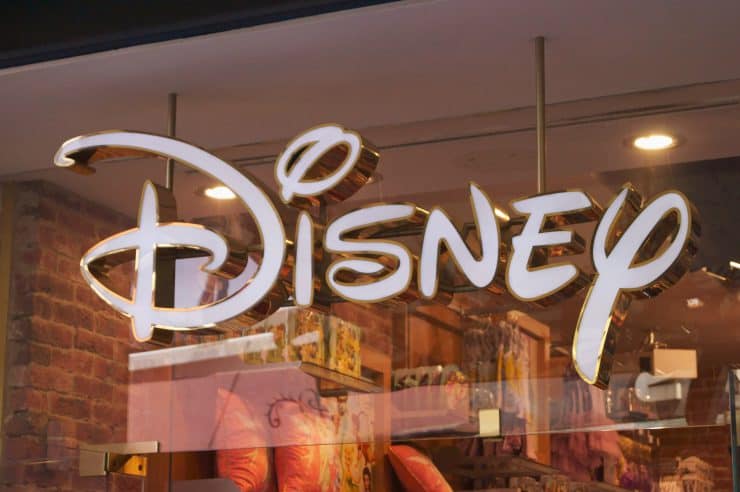
Amazon and Disney teamed up in early 2023 to build a bunch of new Disney-inspired features that can be accessed via Echo smart speakers.
You will soon be able to activate your Echo devices by saying “Hey Disney!” (not “Alexa”), and this will kick off a Disney, Pixar and Star Wars packed experience with a range of characters to interact with, along with having various jokes, trivia and soundscapes to play with.
This sounds pretty awesome, but it’s not free – you will need to purchase the “Disney Magical Companion voice assistant” for an added fee. The price hasn’t been announced yet, but it’s interesting to me that Amazon are adding a bunch of new features to their smart speakers – but only for paying customers.
I personally think that Amazon will carry on this trend, bringing out more new features that you need to pay for.
Note: I do appreciate that developing these new features will cost companies money, and Amazon are probably paying Disney licensing fees too. So I can understand why the Disney experience will be a paid-for extra. I am just cagey that this is the start of a wider trend (of making people pay for new features). It’s exactly what Amazon-owned Ring have started doing recently, too.
Companies Often Start Off Cheap, Then Hike Their Prices
There is a business term called ‘penetration pricing‘, which is where a company is new to a particular market. They want to gain market share, so they start out really cheap. But after building a loyal following, they start hiking their prices – a lot.
It’s why Netflix started out at just $8 a month, but they now charge up to $20 a month – plus an extra $8 per month if you want to share your password!
Amazon are doing exactly the same with Echo and Alexa, in my opinion. They regularly sell Echo devices for below-cost prices, such as $10 Echo Dots during sales events. This is great for Amazon because they build up a massive share of the market – with people like me buying 5 of them!
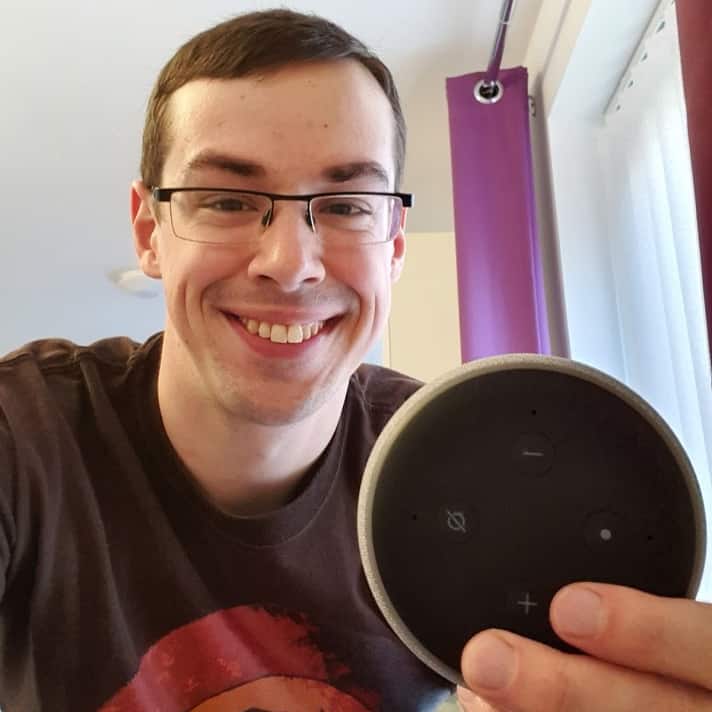
Over the space of a few years, we find that we have loads of junk awesome smart devices filling up every corner of our home – from smart speakers to water leak sensors. While this can be a good thing, it also means that we become highly dependent on the cloud-based platform that powers all this – and this is often Amazon Alexa.
In other words, we can quickly find ourselves in a position where our home life depends on Amazon Alexa. Amazon knows this, and penetration pricing theory would suggest that they will eventually hike their prices – probably by introducing a monthly subscription fee (they can’t retrospectively bill us again for the devices we have already purchased, after all, so a subscription service will be the next best option for them).
Alexa’s Cloud Infrastructure Is Not Free
When people discuss Amazon’s smart home platform, they sometimes say “Echo” – however Amazon Echo relies on the internet to access the real smart home platform – Alexa. Even asking for your Echo device to play a simple song can result in loads of background tasks for Amazon Alexa to carry out:
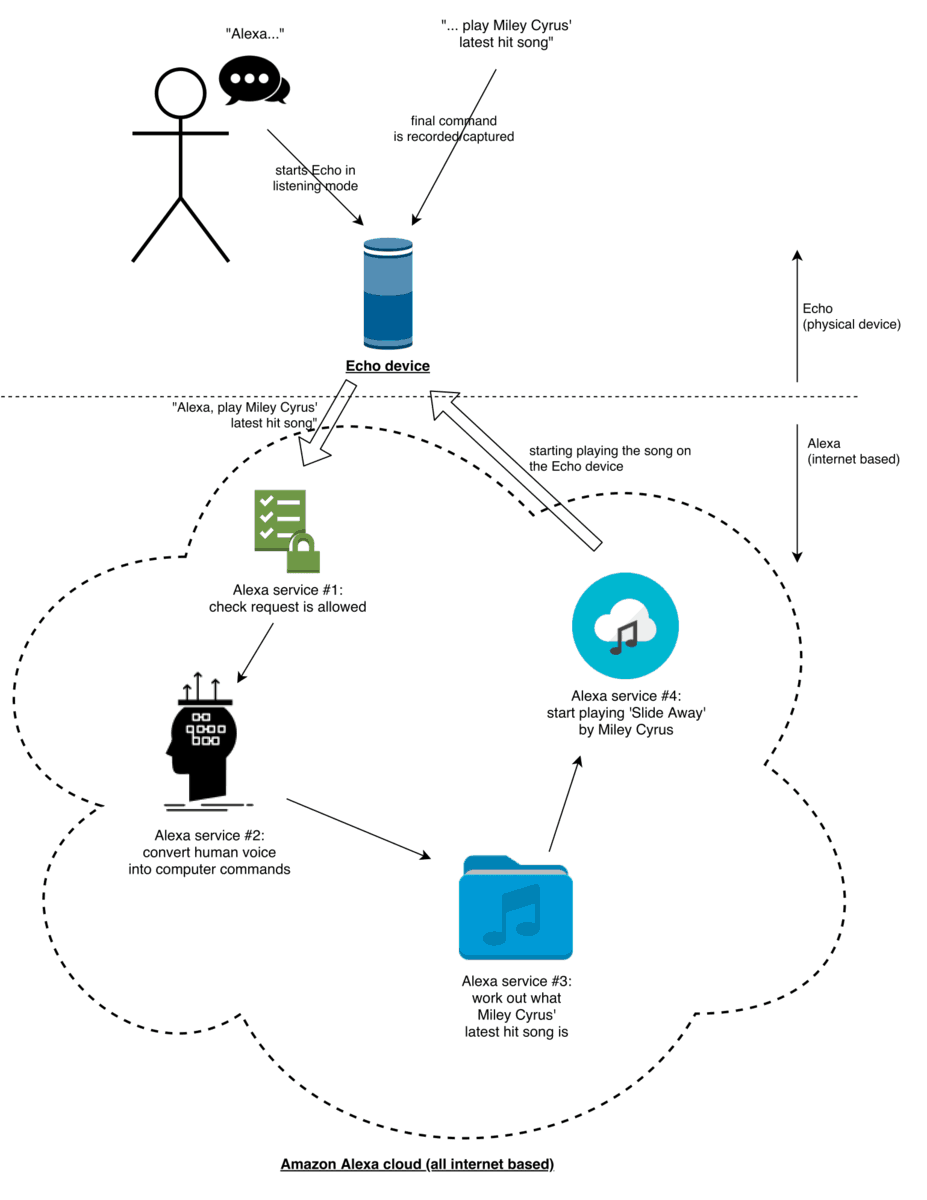
This all costs Amazon money (granted, only a tiny amount per request). After all, the cloud servers themselves cost money to run. Each cloud service also costs money to process each request, and Amazon also need to pay a range of IT staff (from cloud infrastructure engineers to software developers) to maintain all these cloud services.
Amazon doesn’t currently pass this cost onto Alexa/Echo customers, which is a big reason why the Alexa division is losing so much money – as I covered earlier.
The more Echo devices people have, the more costs Amazon will see in their Alexa cloud platform. Unless Amazon is happy to keep bankrolling this loss-making division, they will be forced to charge money for at least some of the Alexa smart home platform.
Amazon’s Head Of Alexa Said They Would “Monetize” Alexa!
If you have read this far and are thinking that this is all conjecture, without a smoking gun, then fear not! I have hard evidence, too. David Limp, Amazon’s VP of Devices, previously said that they plan to “monetize” Alexa:

This is not some vague idea – Amazon’s Alexa division are actively working on a “plan” to “monetize” Alexa, according to the effective head of this division. Great.
This does make sense, though. Amazon has cut thousands of jobs from the Alexa division due to its losses (and the wider economic turmoil). While Amazon is still “committed” to the Alexa platform, the only other way to make Alexa more profitable is to now start charging a subscription.
(Well, they could sack even more staff, but at some point that would just destroy the entire Alexa platform – which would naturally be self-defeating!)
What I Personally Think Amazon Will Do With Echo & Alexa
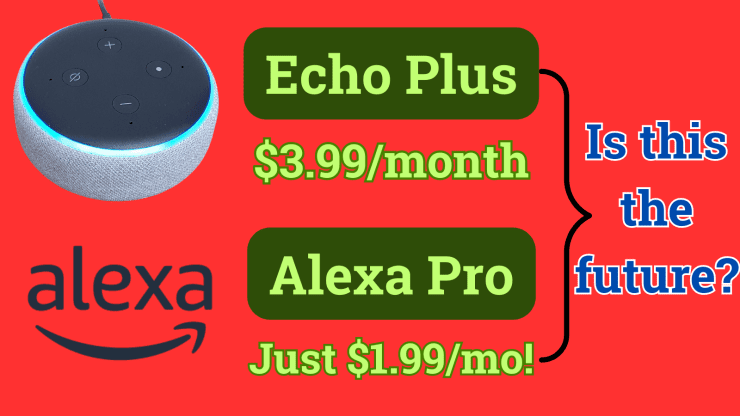
So Amazon clearly hasn’t announced an Echo Plus or Alexa Pro subscription… yet. And even though they massively nerfed the Prime Music subscription plan with their “in shuffle mode” change, I doubt that Amazon will suddenly turn off Alexa’s cloud features overnight unless people pay. Even Wink backtracked quickly when they attempted to do this!
What I think Amazon will do going forward is to introduce more and more new features that are paid-for only, just like “Hey Disney!” will be. I would also make an educated guess that Amazon will introduce a two-tier Alexa, with a free plan that limits you to (say) 30 devices and 10 routines.
If you want more than this, you would then have to pay a small monthly subscription (under $5 per month). There are a few reasons why I think Amazon will do this:
- Amazon clearly want to “monetize” Alexa, and moving to a free-and-paid-tier system would allow Amazon to bring in some extra revenue, while also claiming that barely anyone has to pay. After all, most users have less than 30 devices and 10 routines set-up – meaning that Amazon’s marketing team could claim that 99.5% of users would still be free.
- This is exactly what IFTTT, Wyze, Blink, Ring and other smart home companies have done. They had loads of free features, then eventually said “oh hold on, this costs us money – we now need to charge for some of these features”. Amazon-owned Ring have literally just done this: in March 2023, they took away the popular modes feature for free-tier customers. This now makes it really hard to Ring Alarm customers to manage their alarm system without paying up.
Once Amazon has introduced this two-tier approach, I think that Amazon will then slowly decrease their limits so that (for example) you can only have 10 devices and 4 routines before you have to pay. Or they’ll just hike the price of Alexa Pro™ from $1.99/month to $3.99/month, saying that they have “worked tirelessly to bring new features, and we haven’t reviewed our pricing in a few years…(blah blah blah, more corporate speak)…” – then they announce the price hike at the very end of the email.
Wow, I should work for Amazon.
Okay not really. But this is what I personally think that Amazon will do. Their smart home ecosystem is growing more powerful all the time – which is great to see, but I doubt they can carry this on without starting to charge for some features.
I hope that I’m wrong, and that Amazon keeps Alexa free forever. But the moment you use cloud-based services, you are locked-in to them – leading the company to assume that they can freely charge you a subscription fee, too!
Tech Tip: Smart home services like HomeAssistant and Hubitat are great alternatives as a result, because you can manage dozens of smart devices for free, all without internet-dependence. However you will need some technical skill to use them.

A very well written, insightful….and troubling article. You are probably right. I think this may give rise to more local solutions, though you aren’t going to get Music Unlimited locally. We’ll see…
Thanks Richard, glad you liked it and think I might be right (as troubling as that might be). As you say, we’ll see – but the general direction from Amazon and Amazon-owned Ring isn’t too promising right now.